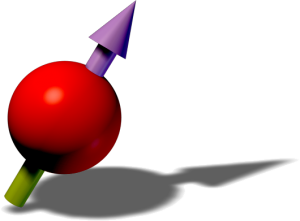by E. G. C. P. van Loon, M. I. Katsnelson, L. Chomaz, M. Lemeshko
Abstract:
Anisotropic dipole-dipole interactions between ultracold dipolar fermions break the symmetry of the Fermi surface and thereby deform it. Here we demonstrate that such a Fermi surface deformation induces a topological phase transition—the so-called Lifshitz transition—in the regime accessible to present-day experiments. We describe the impact of the Lifshitz transition on observable quantities such as the Fermi surface topology, the density-density correlation function, and the excitation spectrum of the system. The Lifshitz transition in ultracold atoms can be controlled by tuning the dipole orientation and, in contrast to the transition studied in crystalline solids, is completely interaction driven.
Reference:
Interaction-driven Lifshitz transition with dipolar fermions in optical lattices,
E. G. C. P. van Loon, M. I. Katsnelson, L. Chomaz, M. Lemeshko,
Phys. Rev. B, volume 93, 2016.
E. G. C. P. van Loon, M. I. Katsnelson, L. Chomaz, M. Lemeshko,
Phys. Rev. B, volume 93, 2016.
Bibtex Entry:
@article{PhysRevB.93.195145,
title = {Interaction-driven Lifshitz transition with dipolar fermions in optical lattices},
author = {van Loon, E. G. C. P. and Katsnelson, M. I. and Chomaz, L. and Lemeshko, M.},
journal = {Phys. Rev. B},
volume = {93},
issue = {19},
pages = {195145},
numpages = {8},
year = {2016},
month = {May},
abstract = {Anisotropic dipole-dipole interactions between ultracold dipolar fermions break the symmetry of the Fermi surface and thereby deform it. Here we demonstrate that such a Fermi surface deformation induces a topological phase transition—the so-called Lifshitz transition—in the regime accessible to present-day experiments. We describe the impact of the Lifshitz transition on observable quantities such as the Fermi surface topology, the density-density correlation function, and the excitation spectrum of the system. The Lifshitz transition in ultracold atoms can be controlled by tuning the dipole orientation and, in contrast to the transition studied in crystalline solids, is completely interaction driven.},
publisher = {American Physical Society},
doi = {10.1103/PhysRevB.93.195145},
url = {http://link.aps.org/doi/10.1103/PhysRevB.93.195145},
arXiv = {http://arxiv.org/abs/1603.09358}
}
